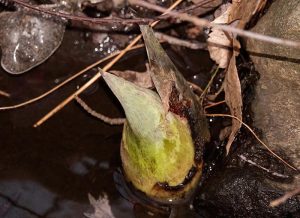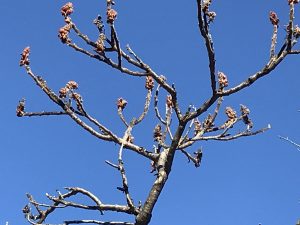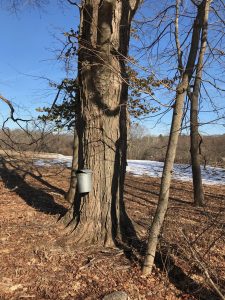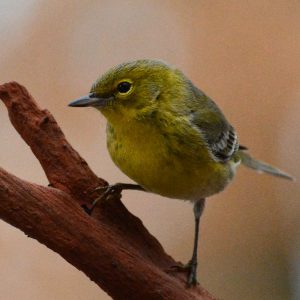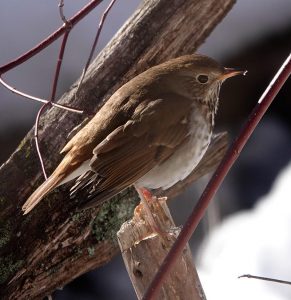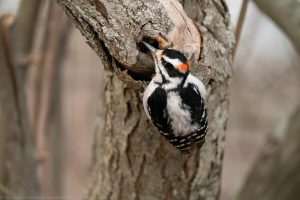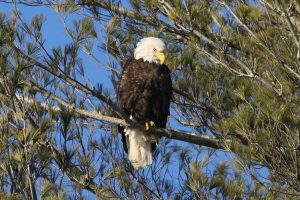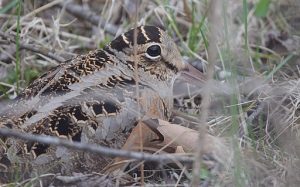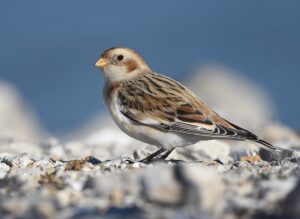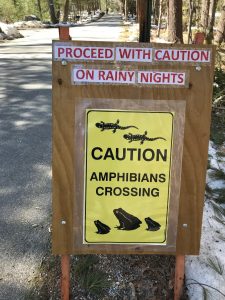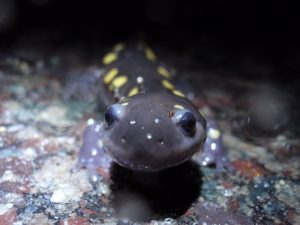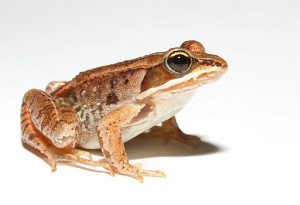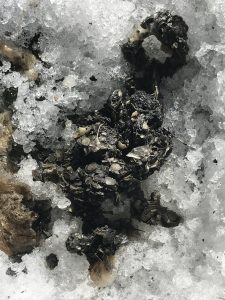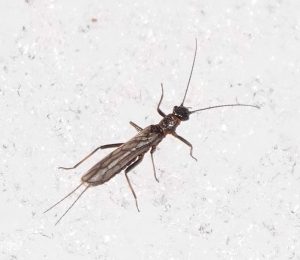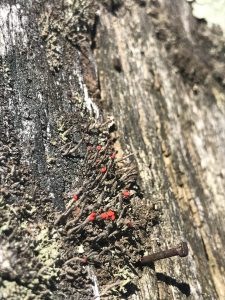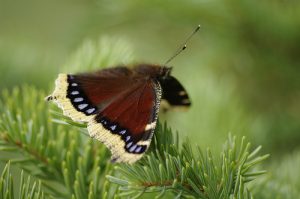Written by Gwyn Loud for the Lincoln Land Conservation Trust. She welcomes your sightings and questions at 781-259-8690 or gwynloud555@gmail.com.
If folklore is correct, when March “comes in like a lion” it will “go out like a lamb”. Time will tell, but the month certainly started with violent winds, downing many trees and limbs. A couple of record-breaking warm days in the seventies the second week of the month lifted our spirits and caused patches of snow and ice on the ponds to recede. Sap buckets are on sugar maples, geese are calling overhead, bird song is ever more plentiful, buds are swelling, and skunk cabbage is poking up in streams and swamps. These are among the signs of spring which we welcome each year in March; a month of expectation, arrivals, and unpredictable swings in weather. There are departures, too, as winter visitors such as white-throated sparrows and dark-eyed juncos prepare to head north to breed.
Mourning doves are cooing, woodpeckers drumming, and house finches twittering, all examples of birds’ singing to attract mates. The bird song will only increase over the next couple of months. Killdeer have been seen and heard in various fields and very soon we shall hear the raspy fee-bee song of the Eastern phoebe, the first flycatcher to arrive. Bluebirds are investigating bird houses all over town and red-winged blackbirds, making their distinctive conk-a-ree calls returned late in February. The males arrived first, often in mixed groups of black birds which include common grackles, European starlings, and brown-headed cowbirds. A huge flock of these birds can empty bird feeders in minutes! Great-horned owls are already sitting on eggs. Flocks of migrating American robins poke for worms in spots where the snow has melted and male American goldfinches are showing patches of yellow as they start molting into their yellow and black breeding plumage. An early tree swallow was spotted at Drumlin Farm as well as a wood duck, and a pair of common ravens was seen stripping bark off a tree for nesting material. We know that ravens nested in Lincoln last year; this species is becoming more common in our area.
Other recent notable avian sightings include a flock of snow buntings in Boyce Field and thirteen red crossbills feeding in the pines near the Drumlin Farm Education Center; these winter visitors will head far north to breed. In fact, according to ornithologist Wayne Petersen, snow buntings “nest farther north than any other songbird in the world. In May, 1987 a single individual, likely misguided and lost, was recorded not far from the North pole.” A pine warbler, an uncommon winter visitor, has lingered for many weeks while enjoying tasty mealworms at a feeder near Farrar Pond, and a birder found a winter wren and two over-wintering hermit thrushes near Valley Pond. It is exciting that bald eagles are nesting again in Concord near the Sudbury River. They are often seen in the Lee’s Bridge/Farrar Pond area.
If you are near a wet meadow just before dark, listen for the nasal peent of the American woodcock. This well-camouflaged, chunky, and secretive member of the sandpiper family does his best to attract a mate in an impressive courtship dance. He starts by bobbing in a circle on the ground while calling, then he spirals up high, and while circling above the field makes a twittering sound with special feathers. Next, he flutters back to his original spot on the ground while making little chirps, and starts all over again. Hopefully a female is nearby and enamored of this display.
Signs are up on several roads to alert us to the annual amphibian migration, when wood frogs, spring peepers, and spotted salamanders make their way to lay eggs in vernal pools and swamps. It needs to be dark, rainy, and above 38℉ for a “Big Night” migration to occur. In recent years the conditions have not been perfect and it seems that the amphibians have migrated bit by bit over a number of nights, but one way or another they get to the water. Crossing roads is very dangerous for them, which is why anyone driving on a wet night in spring is asked to go very slowly to avoid squashing the animals. Unfortunately, salamanders look a lot like sticks from the car. Once the tiny spring peepers, tree frogs only an inch long, get to the swamps they will give their distinctive chorus throughout the spring. The male wood frogs croak to attract mates during daylight from vernal pools, sounding much like quacking ducks, but after a couple of weeks they are silent and return to dry land for the rest of the year, leaving the eggs to hatch and grow into little tadpoles. Salamanders do not vocalize.
Chipmunks have emerged from their winter burrows and red squirrels are dashing about. Mary Holland writes that red squirrels have a sweet tooth and can be seen biting into sugar maples to get the sap (2% sugar) to run. “After it has dried, the squirrel returns to lick the dried sap, which- due to evaporation- is now 55% sugar. “People continue to report seeing coyotes, deer, fishers, and foxes and hearing coyotes howling. Fishers, by the way, are members of the weasel family; they are not “fisher cats” but just plain “fishers”. A dead opossum was found on Codman Road and one night I watched a very fat raccoon trying in vain to tip over a birdseed can. A neighbor found otter scat near a pond, the scat containing telltale fish scales. March is breeding season for striped skunks.
Some insects have survived winter by coming into our houses. No doubt you have found brown marmorated stink bugs indoors; they are harmless to humans and homes, although do harm crops, and may make an odor if crushed. I just drop them out the window. We start to see insects become active outdoors as temperatures rise. For instance, Norman Levey recently came upon many small winter stoneflies on the snow and flying around near a stream. According to Mary Holland (one of my nature gurus), “The winter-emerging stonefly nymphs molt to the adult stage in the space between the water surface and the ice……they are very small and consume blue-green algae. Most are flightless, and they are engaged in breeding and laying eggs in the stream. These insects are a late-winter/early spring food staple of American robins and eastern phoebes.”
A beautiful insect to look for soon is the mourning cloak butterfly, which over-winters as an adult, unlike most butterflies. Beware of ticks; they are active now.
We shall welcome spring officially on March 20, the vernal equinox, and March’s full moon, the Worm Moon, will occur on March 28. The Old Farmer’s Almanac says this full moon has many other names, such as Eagle Moon, Goose Moon (Algonquin, Cree), Crow Comes Back Moon (Northern Ojibwe), Sugar Moon (Ojibwe), Wind Strong Moon (Pueblo), Sore Eyes Moon (Dakota, Lakota, Assiniboine), and Lenten Moon (Christian; called Paschal Full Moon if after the equinox, as it is this year.)


